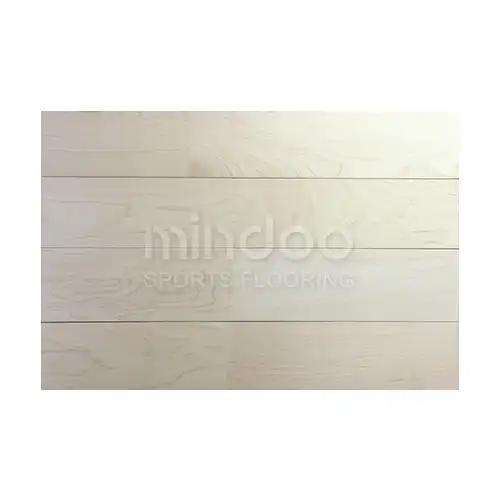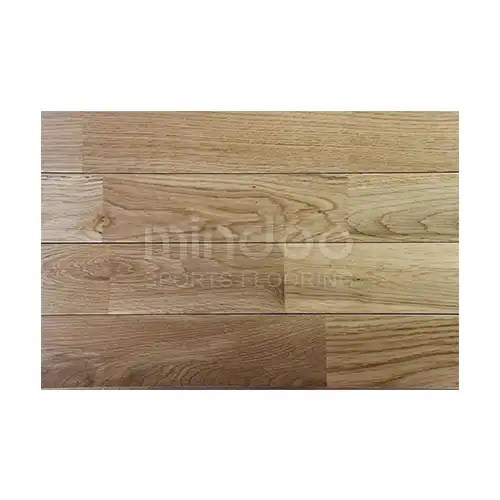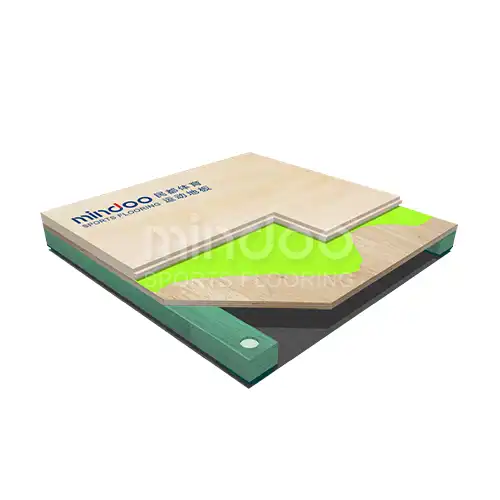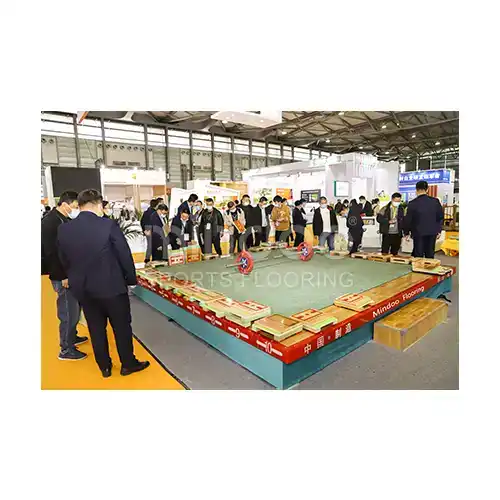Why is Hardwood, Particularly Maple, the Traditional Choice for Basketball Court Flooring?
Basketball courts worldwide are predominantly made from hardwood, specifically maple. This choice is not arbitrary but based on several well-researched factors that make maple the ideal material for sports flooring. This blog explores why maple hardwood flooring is the traditional choice for basketball courts by addressing common questions that people frequently search for online.
What Makes Maple Hardwood Ideal for Basketball Courts?
Maple hardwood is favored for basketball courts due to its unique combination of durability, performance, and aesthetics. One of the critical attributes is its high Janka hardness rating of 1450, which indicates excellent resistance to wear and damage. This high hardness rating ensures that the flooring can withstand the intense and frequent impacts typical in basketball games without deteriorating quickly.
Durability and Wear Resistance
The density and hardness of maple make it incredibly durable, able to endure the constant foot traffic and physical impact of basketball games. Unlike softer woods, maple resists scratches and dents, maintaining a smooth and even surface that is crucial for the fast-paced movements of basketball players.
Aesthetic Appeal
Maple hardwood has a light, uniform color with a fine, consistent grain pattern. This not only makes the court visually appealing but also provides a clear and bright playing surface that enhances visibility. The light color helps in tracking the ball and players, which is essential for both athletes and spectators.
Consistency and Performance
Maple's consistent grain pattern ensures uniformity across the entire court, which is vital for maintaining consistent performance characteristics. This uniformity helps in providing a reliable surface for ball bounce and player movements, reducing the risk of unexpected slips or falls.
How Does Maple Hardwood Flooring Perform in Terms of Shock Absorption and Ball Bounce?
Performance characteristics such as shock absorption and ball bounce are essential for basketball courts. Maple hardwood floors excel in these areas, providing a balance that is crucial for both player safety and game performance.
Shock Absorption
Shock absorption is vital for minimizing the impact on players' joints and reducing the risk of injuries. Maple hardwood floors are engineered to offer excellent shock absorption, thanks to their natural properties and the advanced subfloor systems often used in conjunction with them. These subfloor systems, such as Aacer’s PowerPlay and ScissorLoc, are designed to enhance the floor’s ability to absorb shocks, providing a more forgiving surface.
Ball Bounce
The ball bounce on maple hardwood floors is highly predictable and consistent, closely matching the rebound characteristics on concrete. This is crucial for sports like basketball where precise ball control and bounce consistency are essential. The uniform density and hardness of maple ensure that the ball reacts uniformly across the entire playing surface, which is a significant advantage over synthetic flooring options.
Playability
The combination of excellent shock absorption and consistent ball bounce enhances the overall playability of the court. Players can rely on the predictable response of the floor, allowing them to focus on their game without worrying about variable surface conditions. This makes maple hardwood an ideal choice for professional and amateur basketball courts alike.
What Are the Cost and Maintenance Considerations for Maple Hardwood Flooring?
Maple hardwood is a significant investment but offers long-term benefits that justify the cost. Understanding the costs and maintenance requirements is crucial for facility managers and owners.
Installation Costs
The initial installation cost for maple hardwood flooring can range from $8 to $16 per square foot, depending on the quality and type of wood, as well as the complexity of the installation. This price includes the cost of the wood, subfloor systems, and labor.
Maintenance Requirements
Maintaining maple hardwood flooring involves regular cleaning, sanding, and refinishing to keep the surface in optimal condition. Dust and dirt should be removed frequently to prevent scratches and wear. Additionally, the floor should be periodically inspected for any damage or wear that may require refinishing.
Long-Term Value
Despite the higher initial and maintenance costs, the longevity and durability of maple hardwood make it a cost-effective choice in the long run. Properly maintained maple floors can last for decades, providing consistent performance and aesthetic appeal. This long lifespan reduces the need for frequent replacements, which can be both costly and disruptive.
How Does Maple Compare to Other Types of Basketball Court Flooring?
While maple is the traditional choice, other flooring options are available, each with its advantages and disadvantages. Comparing these options helps in understanding why maple remains the preferred material.
Synthetic Flooring
Synthetic floors, made from materials like vinyl or rubber, are more affordable and easier to maintain than hardwood. They offer excellent shock absorption and are resistant to moisture and chemicals. However, synthetic floors often lack the natural ball bounce characteristics and aesthetic appeal of hardwood.
Rubber Flooring
Rubber flooring provides outstanding shock absorption, making it a good option for multi-purpose gymnasiums and recreational facilities. However, rubber can be slippery when wet and does not offer the same ball bounce consistency as maple hardwood, making it less suitable for professional basketball courts.
Comparison with Other Hardwoods
Other hardwoods, such as oak or birch, can also be used for sports flooring. However, maple’s superior hardness and uniform grain make it the preferred choice. Oak, for example, is more porous and can be less durable under intense use. Birch, while similar in hardness, does not offer the same level of aesthetic appeal and consistency as maple.
What Are the Environmental and Sustainability Considerations of Using Maple Hardwood?
Maple hardwood flooring is also an environmentally responsible choice. Understanding the environmental impact and sustainability practices associated with maple hardwood can help in making informed decisions.
Renewable Resource
Maple trees are abundant in North America, making the wood readily available and sustainable. Responsible forestry practices ensure that maple harvesting does not deplete natural resources, promoting a healthy ecosystem.
Sustainable Manufacturing
Many manufacturers of maple hardwood flooring, such as Aacer, employ environmentally friendly practices in their production processes. This includes using low-VOC finishes and recycling wood waste. These practices help reduce the overall environmental impact of their products.
Longevity and Reduced Waste
The longevity of maple hardwood floors significantly contributes to their sustainability. Proper maintenance can extend the lifespan of maple floors, reducing the need for frequent replacements. This long-term use minimizes waste and makes maple hardwood a more sustainable option compared to materials that require more frequent replacement.
Conclusion
Maple hardwood is the traditional choice for basketball court flooring due to its superior durability, performance, and aesthetic appeal. Its high hardness rating, excellent shock absorption, and reliable ball bounce make it ideal for sports applications. Although the initial and maintenance costs are higher, the long-term benefits and sustainability make maple hardwood a worthwhile investment for basketball courts.
References
A Comprehensive Guide to Basketball Court Flooring
Basketball Wood Floor: The Ultimate Guide
Basketball Court Flooring: What’s the Standard Material?
Indoor Basketball Court Flooring Surface Material, Costs, Etc.
Sports Floors 101: Hardwood Court Features
Choosing the Perfect Basketball Court Flooring
What Is The Best Flooring For a Basketball Court?
Why Are Basketball Courts Made of Wood? The Science Behind Basketball
Indoor Basketball Court: Types Of Floor Material
Why are Sports Floors Always Made out of Maple?
For more product information, feel free to contact us at sales@mindoofloor.com.





